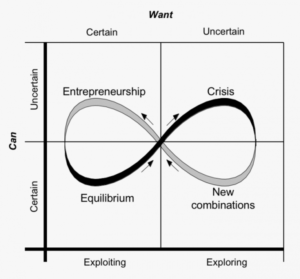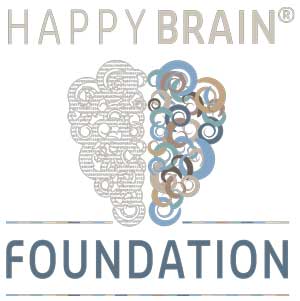In a world faced with unforeseen developments, organisations need to respond adequately to an unknown future. But how to do this? In practice, the Adaptive Cycle of Resilience (ACoR) proves to offer tools to understand the unforeseen future(s) and to be able to shape it properly. The ACoR model follows a cyclical development within four quadrants. The infinite cyclical process starts from an assumed ‘Equilibrium’ state, where relatively small disturbances appear. However, when external influences severely disrupt the equilibrium, like the current Coronavirus, the organisation switches to the ‘Challenge’ quadrant, where a search process starts for new solutions and appropriate competencies, skills, mindsets and attitudes of the management and teams. This leads to the ‘New Combinations’ quadrant, where awareness of leadership and governance is crucial. After determining several options, the most suitable solution must be chosen. The transition to the so-called ‘Operationalisation’ quadrant requires innovation capacity. It is the most challenging phase of the cycle for the management, because the final choices are often made without being sure of their successes. The encountered problems within this cyclical process can be identified through the ACoR-stages. We distinguish:
- Lock-in, when management does not see the crises or challenge coming;
- Poverty, when they lack creativity to come up with new solutions;
- Isolation, when they cannot convince the organisation to initiate the change;
- Rigidity, when there is resistance to change.
In the article, we examine the cycle, focusing on its nature and origin, the goal to be pursued, the process and the necessary competencies and capacities. Dealing with challenges stands or falls with the organisation’s ability to solve problems, both on short (dealing with the current issues) and on long term (assuring that it will not happen again), so our article shows that the context of the problem is just as important as the ability to deal with it. Besides, a relapse into old patterns is an identifiable risk to the organisation’s innovation capacity.
Does your organisation have this innovation capacity in order? This paper guides the Readers through answering this question.
Authors:
Emőke Takács, ERI Hungary – European Research Institute Nonprofit Kft, Budapest, Hungary, t.emoke@eri.net.in
Toon Abcouwer, University of Amsterdam, Amsterdam, The Netherlands, Abcouwer@uva.nl
Read the article: ACoR; Leadership, management and teams

